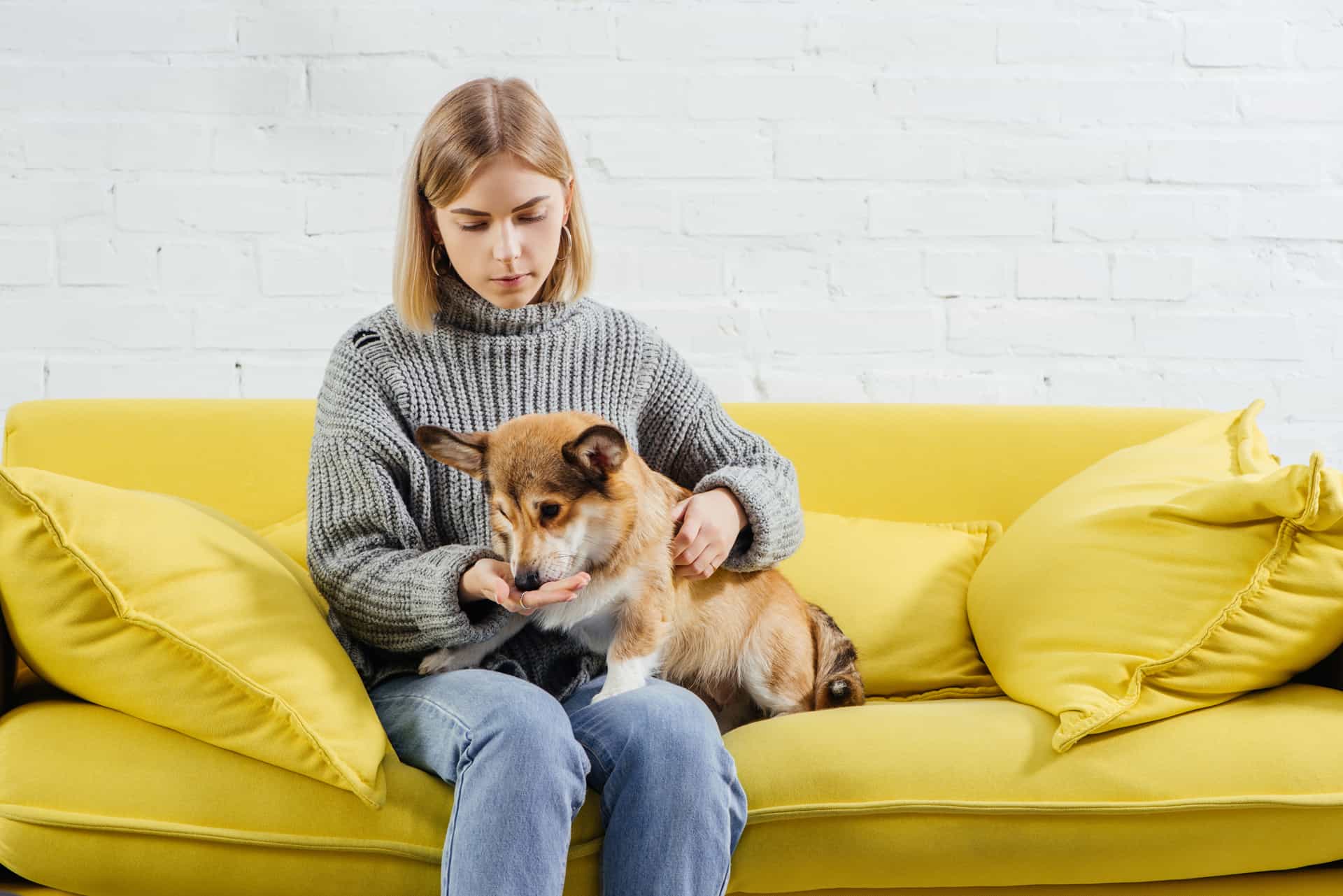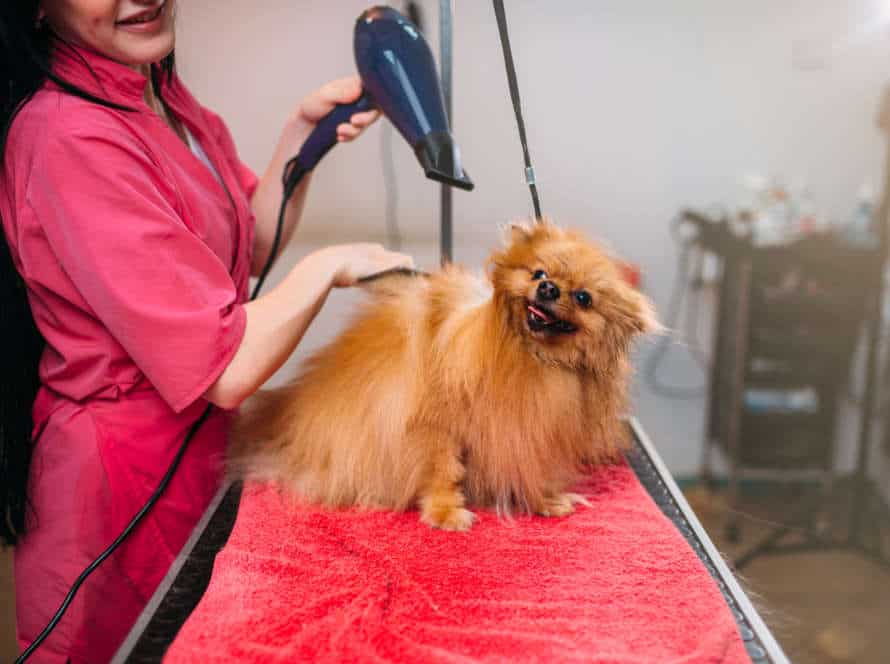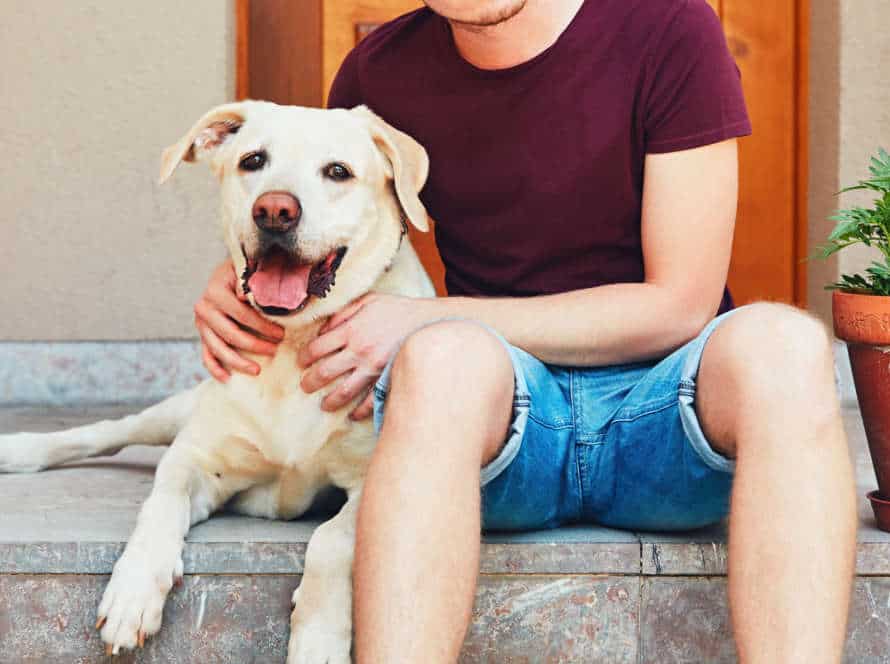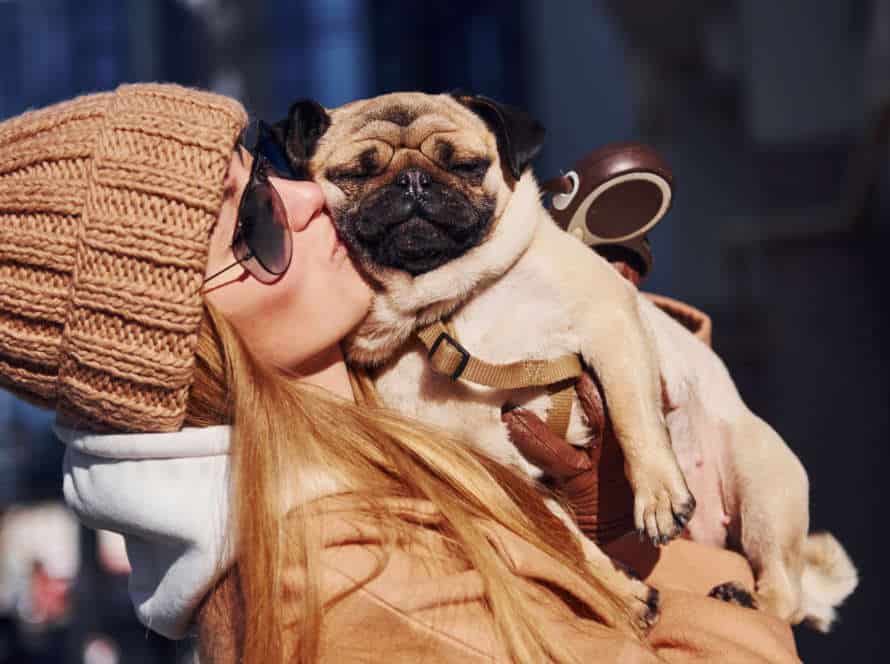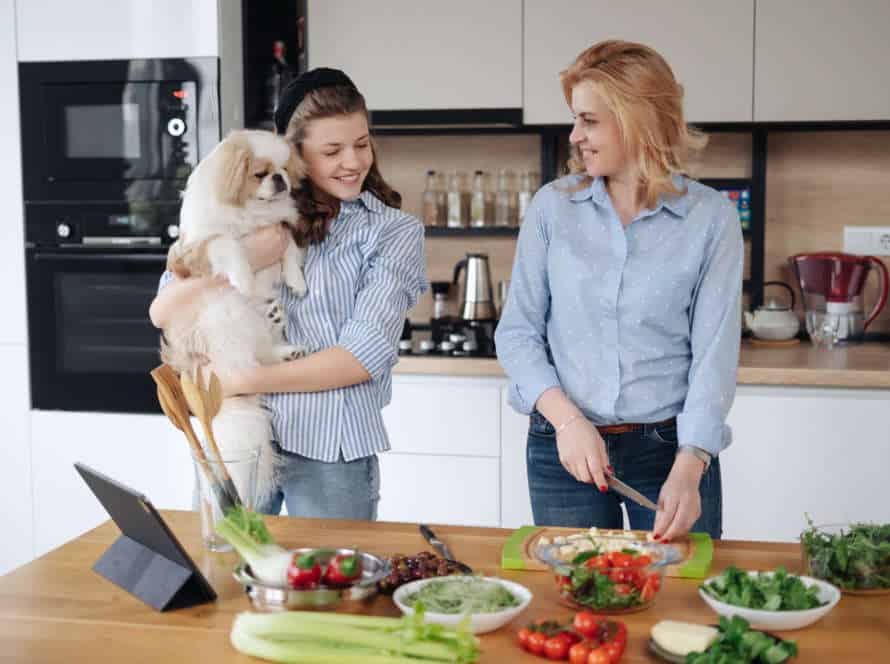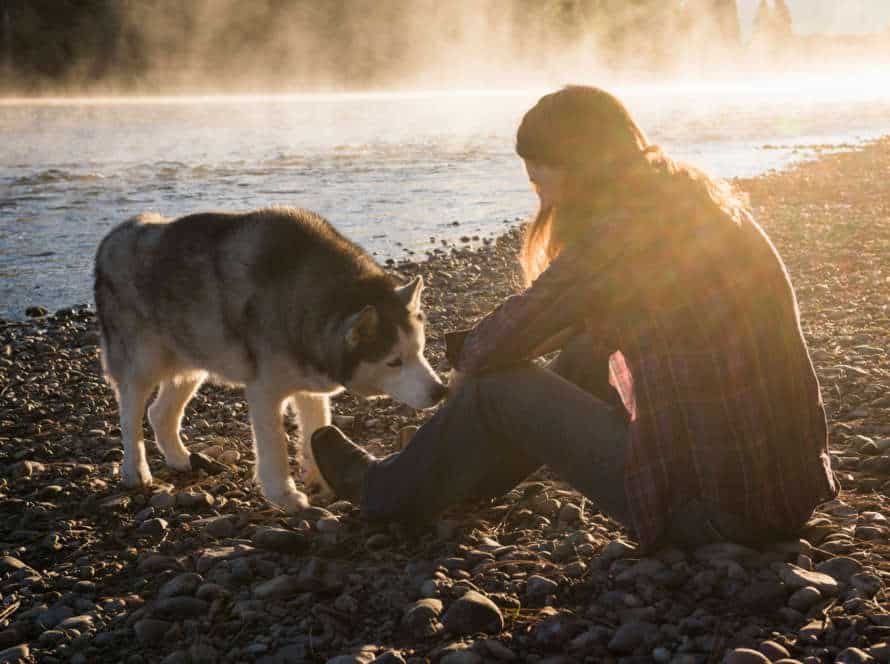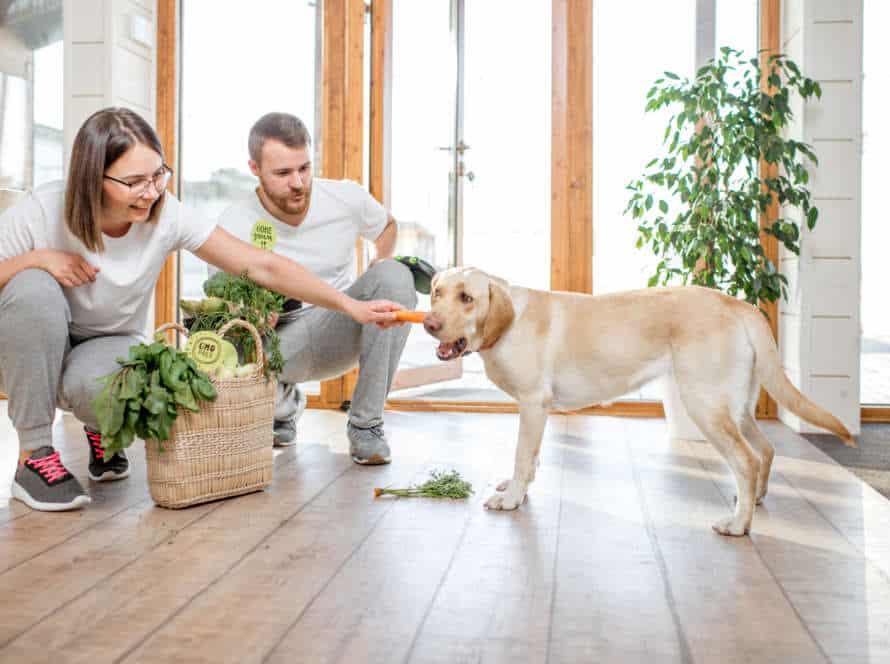Positive Reinforcement: The Foundation of Effective Dog Training
Positive Reinforcement is a great tool for training dogs. It’s a reward-based method that encourages desired behavior, rather than punishing the unwanted.
How does it work?
Reward your pup every time they perform the desired activity. This could be treats, praises, or verbal cues. Over time, they will connect the behavior with the reward and repeat it. This technique is popular for training dogs and correcting behaviors such as biting, barking and jumping.
Keep rewards consistent, and always available. This will help your dog to develop positive behaviors and strengthen the bond between the two of you.
Pro Tip: Leash your pup during training, for better control.
Understanding Positive Reinforcement Dog Training
Positive reinforcement dog training is a favorite and useful way to train our pup pals. We reward desirable behaviors with applause, snacks, games, or other benefits. This sort of training relies on the concept that our pooches will be more likely to repeat actions that get positive reinforcement. Positive reinforcement dog training is a successful method to teach our dogs obedience, politeness and even stunts. Let’s explore the various aspects of this style of training.
Define positive reinforcement dog training
Positive reinforcement dog training is a technique where dogs get rewards for doing certain behaviors. This helps them to repeat these behaviors in the future. It’s great for teaching new behaviors, stopping unwanted behaviors and strengthening the bond between dog and owner.
Here’s how it works: If your dog does something you want, like sit or come when called, you give them a treat, tell them you’re proud or give them a cuddle. Over time, the dog will learn that if they do the behavior, they’ll get something positive in return.
Positive reinforcement dog training is awesome because it builds trust and a strong connection between you and your pet. Plus, it’s more fun for everyone involved.
Discuss the principles and benefits of positive reinforcement dog training
Positive reinforcement dog training is a technique that rewards and praises good behavior instead of punishing or scolding. Here are its principles and benefits:
Principles:
- Treats or verbal affirmations are used to boost good behavior.
- Negative behavior is ignored or redirected, not punished.
- Consistency and repetition are important to reinforce good behavior & correct bad.
Benefits:
- Builds trust & strengthens bond between dog & owner.
- Creates a positive & enjoyable learning environment for the dog.
- Reduces stress & anxiety in the dog, as punishment can hurt the relationship.
Positive reinforcement is key for effective training & a happy pup. Pro Tip: Be positive & avoid punishing – it can be harmful for your dog’s mental health.
Compare positive reinforcement to other dog training methods
Positive reinforcement is a pup training technique based on providing treats for good actions, not punishing bad behaviour. Compared to other dog training methods, it has several advantages.
Aversive training relies on punishing bad behaviour, instead of rewarding good behaviour. This could be by physical punishment or verbal scoldings. This can cause fear, aggression and anxiety in dogs, and also damage the bond between the owner and pup. Positive reinforcement, however, creates a healthy and trusting relationship.
Punishment-based training uses a shock collar, choke chain or other aversive tool, to correct a pup’s behaviour. Although this tactic may work temporarily, it often causes fear, frustration and even aggression in dogs. On the other hand, positive reinforcement focuses on rewarding good behaviour, encouraging pups to learn and please their owners.
In conclusion, positive reinforcement is the foundation of effective and humane pup training, providing a safe and positive way for pups to learn and develop.
Implementing Positive Reinforcement Dog Training Techniques
Positive reinforcement is an effective technique to train dogs. This method involves giving rewards to desired behaviors. Rewards must be given quickly and regularly to create an association between the behavior and the reward. This will encourage the dog to repeat the desired behavior.
Here are some techniques to use positive reinforcement dog training:
- When your dog follows a command correctly, give them a treat or verbal praise immediately
- Use high-value treats, such as small pieces of cheese or chicken, to reinforce especially good behavior
- Pair a reward with a clicker to create an even stronger association between the behavior and the reward
- Be consistent with rewards and never use physical punishment or negative reinforcement techniques
Identify desired behaviors to reinforce
Positive reinforcement is a great tool for training your pup. To use it, you need to identify what you’d like your dog to do. Here’s the plan:
- Observe your dog’s natural behaviours.
- See what you want them to do.
- Break it down into easy steps.
- Pick a reward that will motivate them – treats, praise or playtime.
- When they do the desired behaviour, give the incentive.
- Repeat regularly and make the tasks harder over time.
With this method, your pup will learn that good behaviour leads to rewards – creating lasting and effective training.
Choose the appropriate positive reinforcement techniques for your dog
Positive reinforcement is a must for dog training. To give your pup a happy and well-mannered life, try these techniques:
- Treat Training – Give treats when your dog behaves, such as sitting, staying, and coming.
- Clicker Training – Use a clicking sound to mark and reward good behavior.
- Verbal Praise – Use words like “good boy” or “good job” to show reinforcement.
- Playtime – Use playtime as a reward for good behavior.
Consistency, clear communication, and patience are key. With these techniques, you can have an obedient, joyful, and well-behaved pup.
Provide consistent positive reinforcement and rewards
Positive reinforcement is a great way to train your pup! Here’s how to use it:
- Define the behavior you want – like ‘sit’ or ‘stay’.
- Reward your dog with something they love – treats or toys.
- Start simple, then move onto more complex commands.
- Give consistent praise and rewards when they do something right.
- No punishing or scolding! Instead, redirect their attention to the desired behavior and reward them.
Positive reinforcement helps you create an amazing bond with your dog, while teaching them good habits.
Common Mistakes to Avoid in Positive Reinforcement Dog Training
Positive reinforcement is a great way to train your dog – it’s effective and compassionate. But you must be aware of the common pitfalls that may occur while using it. Here, we’ll talk about the biggest blunders dog owners make when using positive reinforcement and how to dodge them.
Using punishment or negative reinforcement instead of positive reinforcement
Punishment or negative reinforcement is a common misstep in positive reinforcement dog training. It can hurt your pup’s physical, mental, and emotional health and destroy your relationship. Here’s why you should avoid punishment-based training:
- Fear, anxiety, aggression, and other issues can arise.
- Natural behaviors and obedience can be stifled.
Positive reinforcement, however, encourages desirable conduct and bonds you and your furry friend.
Tip: Use treats, toys, and praise as rewards to motivate and reward your pup for good behavior instead of punishment or negative reinforcement.
Inconsistency in reinforcement and reward delivery
Avoid inconsistency when training your dog with positive reinforcement. Don’t fail to reward desired behaviors or you’ll confuse your pup, resulting in less responsiveness.
Here are some tips:
- Figure out which behaviors you want to reinforce and reward them every time they occur.
- Use rewards that your dog finds meaningful, such as treats, toys, or verbal praise.
- Give the reward right away, to tie the behavior to the reward.
- Switch up the rewards to keep your pup interested.
- Be patient and stay consistent for the best results.
Pro tip: Consistency is essential. Keep track of your pup’s progress and make adjustments as needed.
Improper timing of reinforcement and rewards
Timing is vital for positive reinforcement dog training. Incorrect timing and rewards can hamper your efforts. Here are some common blunders to dodge:
- Delayed reinforcement: Don’t wait to reward your pup for good behavior. This can be puzzling for them and reduce the link between their behavior and the reward.
- Incorrect timing: Don’t reward your pooch for the wrong behavior. This includes rewarding them for jumping instead of sitting.
- No consistency: Inconstant reinforcement will make it difficult for your pup to understand which behaviors are desirable.
- Over-reliance on treats: Don’t depend excessively on treats as a reward. This can make your pup respond only when you have treats, not because of the desired behavior.
Keep in mind, consistency, timing, and fitting rewards are key for positive reinforcement dog training, to get lasting and successful results.
Positive Reinforcement Dog Training Examples
Positive reinforcement dog training is an effective way to support your pup’s great habits. You can do this by offering treats, petting, verbal praise, and fun playtime. This kind of training helps to create a strong connection between the dog and their owner. Plus, it can be used to teach basic commands and behaviours.
Here are some examples of positive reinforcement dog training:
Teaching basic commands such as sit, stay, and come
Teaching commands, like “sit,” “stay,” and “come” to dogs, can be easy and fun for you and your pooch! Positive reinforcement dog training is the way to go.
Treats are an excellent way to reward good behavior. Give a small treat and praise when your pup follows a command.
Playtime is a great reward too – use a beloved toy to engage your pup in play.
Verbal praise, like “Good boy!” or “Good girl!”, is motivating to your pup, too.
Consistency is key in positive reinforcement. Be consistent with commands, expectations, and rewards, and your pup will learn quickly.
By using these techniques, you can build clear communication and strengthen the bond between you and your pup. Don’t forget: be patient and persistent. Consistency is the key to success!
Addressing common behavior issues such as jumping and leash pulling
Tackling typical doggy behaviour issues, like jumping and leash-pulling, needs a comprehensive approach to positive reinforcement training. This trains pups in the desired behaviours, always with positive reinforcement.
Positive reinforcement is a crucial part of effective dog training; it rewards dogs when they exhibit the desired behaviour.
Here are some examples of positive reinforcement dog training:
- Leash Training: Start with short walks, treating the pup each time it stays close. Use treats and a no-pull harness to encourage the pup to stay at your side. Over time, increase the distance and duration of the walk.
- Jumping: Turn away when the pup jumps, rewarding it when all paws are on the floor. Teach an alternative behaviour – like ‘sit’ or ‘down’ – and reward when pup follows.
Remember: Positive reinforcement works if you’re consistent, patient and repeat the training. Keep your tone positive and gentle.
Advanced techniques such as agility training and scent work
Agility training and scent work are advanced positive reinforcement techniques to train dogs. Agility Training consists of obstacle courses for dogs to navigate, teaching them balance, coordination, and discipline. This strengthens the bond with you and your pup, boosts confidence, and provides a physical workout. With Scent Work, your pup uses their natural sense of smell to find scents or objects. This is perfect for dogs with a high prey drive, as it gives them an outlet for their instincts. It’s also a great mental workout and can sharpen their focus. The right positive reinforcement techniques, like agility and scent work, make dog training enjoyable for both you and your pup.
Frequently Asked Questions
Q: What is positive reinforcement in dog training?
A: Positive reinforcement is a training method that rewards desired behavior in dogs with praise, treats, or other rewards, thereby increasing the likelihood that the behavior will be repeated in the future.
Q: Is positive reinforcement the only effective dog training method?
A: No, there are other training methods like negative reinforcement and punishment that can be effective. However, positive reinforcement is widely acknowledged to be the most humane and effective method for training dogs.
Q: How does positive reinforcement differ from punishment?
A: Positive reinforcement rewards good behavior, while punishment attempts to deter bad behavior through reprimands or physical correction. Positive reinforcement has been shown to be a more effective way to teach dogs new behaviors and to build stronger bonds between dogs and their owners.
Q: Can positive reinforcement be used for all types of dog behavior?
A: Yes, positive reinforcement can be used to encourage any behavior that a dog is capable of learning, from basic obedience commands like sit and stay to more complex tricks and behaviors.
Q: How can owners use positive reinforcement to correct negative behaviors?
A: Positive reinforcement can be used to replace negative behaviors with positive ones. For example, owners can reward a dog for sitting calmly rather than jumping on guests. Over time, the dog will learn that the positive behavior is more rewarding than the negative one.
Q: Is positive reinforcement time-consuming and difficult to implement?
A: Positive reinforcement can be incorporated into daily interactions with dogs, and owners can use treats or favorite toys as rewards. With consistency and patience, positive reinforcement can be a simple and effective way to train dogs of all ages and breeds.

